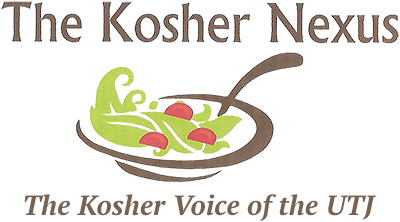Some soda companies like Jones and Avery’s Beverages tout their strange and sometimes unappetizing flavors openly. (Did you know that Turkey and Gravy Soda is a thing?) Other companies, however, have congruently released their fair share of products, which probably sounded like a good idea at the time, but slowly lost their appeal.
Orbitz Soda
Have you ever stared at a lava lamp and thought to yourself, “That looks like a refreshing beverage?” Well, the marketing team at the Clearly Food and Beverage Company of Canada sure did back in 1997, and thus, Orbitz Soda was born. The clear soft drink came complete with floating, anti-gravity droplets, which have been described as both chewy and tasteless—what a combo! The liquid itself came in varying flavors like Vanilla Orange, Pineapple Banana Cherry Coconut (there’s a lot going on there), and Raspberry Citrus. According to many consumers brave enough to test out the “texturally enhanced alternative beverage,” it also left much to be desired.
When the drink first hit shelves, it gained some curiosity and traction in the market. But, it seemed to be more of a one-and-done beverage experience for many Americans. The product was discontinued in 1999, just two years after its wild orbit landed it on Earth.
Pepsi Blue
Pepsi is constantly churning out new flavors and iterations of its classic and long-adored soda pop. While some flourish in the market, others flop, and a few even create a fair share of controversy. One such product was Pepsi Blue. The drink was said to taste like anything from blueberries to cotton candy, but the neon blue coloring was anything but natural. In fact, it was actually created through the use of Brilliant blue FCF or Blue 1—a synthetic dye, which is highly debated in the health world and even banned in some other countries. Most of the U.S. has been safe from this chemical-ridden beverage since 2004, although it has made a few guest appearances in international markets.
Hubba Bubba Soda
America’s favorite gum morphed into a fizzy liquid? What could go wrong? It turns out not a lot at first, as shoppers and their sugar-loving kids rushed to get their hands on the Hubba Bubba Soda when Wrigley released the drink in 1987. But, just like the beloved gum, the novelty soft drink began to fizz out fairly quickly. The recognizable pink cans—along with their Diet Hubba Bubba Soda counterparts—only lasted a few years in stores. Looks like Wrigley really blew its chance at the soda market!
OK Soda
No product marketed as just “OK” would fly in today’s world, and we’re not so sure why it gained any popularity in the 1990s either. Released by Coca-Cola, OK Soda could be recognized by its cans donning strange and sad illustrated faces, and also by its so-so flavor—which some would also describe as citrusy, or as an interesting clash of other sodas. The idea was to market and appeal to the younger Generation X population. But, the negativity and mediocrity eventually fell flat.
7-Up Gold
7-Up Gold was the first brainchild to be born from the manufacturer’s merger with Dr. Pepper in 1988—and it was neither company’s finest work. Flavors of cinnamon and ginger joined forces in the aluminum cans creating an interestingly spicy soda in a somewhat off-putting shade of amber and brown. But, the flavor wasn’t even the largest problem. The soda’s advertising was recklessly misleading, using the slogan “Never Had It, Never Will,” referring to its caffeine content, when the drink did, in fact, contain caffeine. This inconsistency, along with its other stark differences compared to the other 7-Up products on the market, caused it to only have but a brief blip of fame.
Chocolate pairs well with loads of different flavors: peanut butter, caramel, nuts, fruit, to name a few. But, chocolate soda? That’s one flavor combination we’re not so sure about. This didn’t stop many well-known soda brands and confection companies from giving it a shot back in the ’80s, however. Among this experimental bunch came the Fudgesicle: a liquified and carbonated version of the popular frozen chocolate dessert. But, the Fudgesicle Chocolate Fudge Soda, along with many other chocolate sodas, have since vanished, hopefully proving that milk is the only acceptable liquid to swirl with chocolate.
Jolt Cola
Life Savers Soda
This sweet soft drink certainly wasn’t saving any lives. Life Savers Soda was brought to life by Wrigley in the 1980s with hopes of gaining as much success as the beloved, rainbow-colored hard candies. It came in classic flavors of Fruit Punch, Pineapple, Orange Punch, Grape Punch, and Lime Punch. Not surprisingly, the liquid sugar proved to be too much for many consumers, and the fizzy beverage was sent to the soda graveyard after a fleeting run on the market.
Snapple Tru Root Be
Over the years, a plethora of root beer brands have emerged hoping to win over both the hearts and taste buds of consumers. While some have triumphed—we’re looking at you, A&W and Barq’s–the soda market has guzzled other brands down just to spit them right back out. One noteworthy attempt was Snapple’s recreation called Tru Root Beer. The beverage exhibited many of the same attributes as other root beers of the time while also containing less sugar with no sodium or caffeine. But, its one distinct difference was that it was crystal clear (reminds us of another long-gone soda Crystal Pepsi). The unnaturally-colored soft drink didn’t last too long, and Snapple has since fallen back into what it does best: juice and tea.


Recent Comments